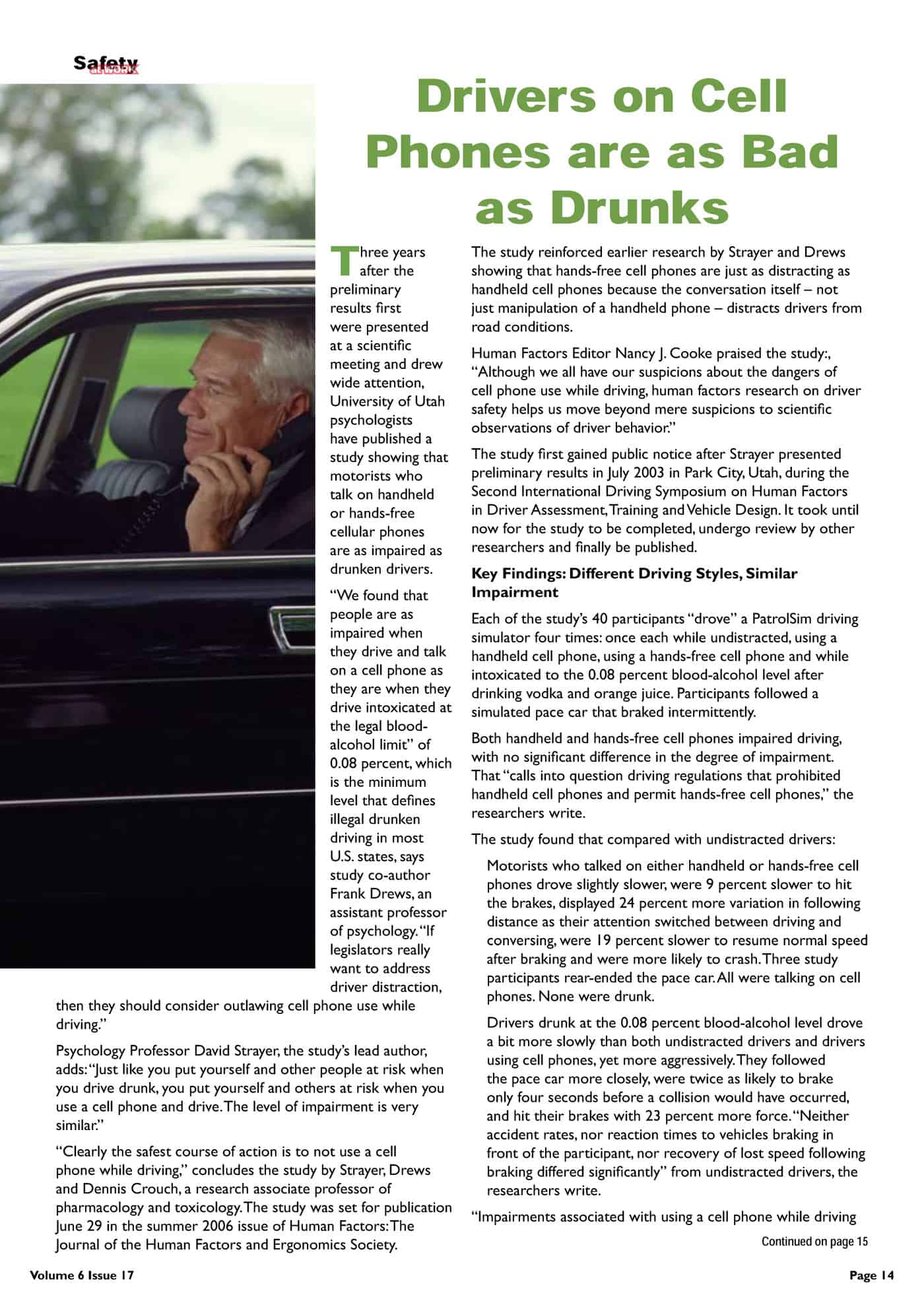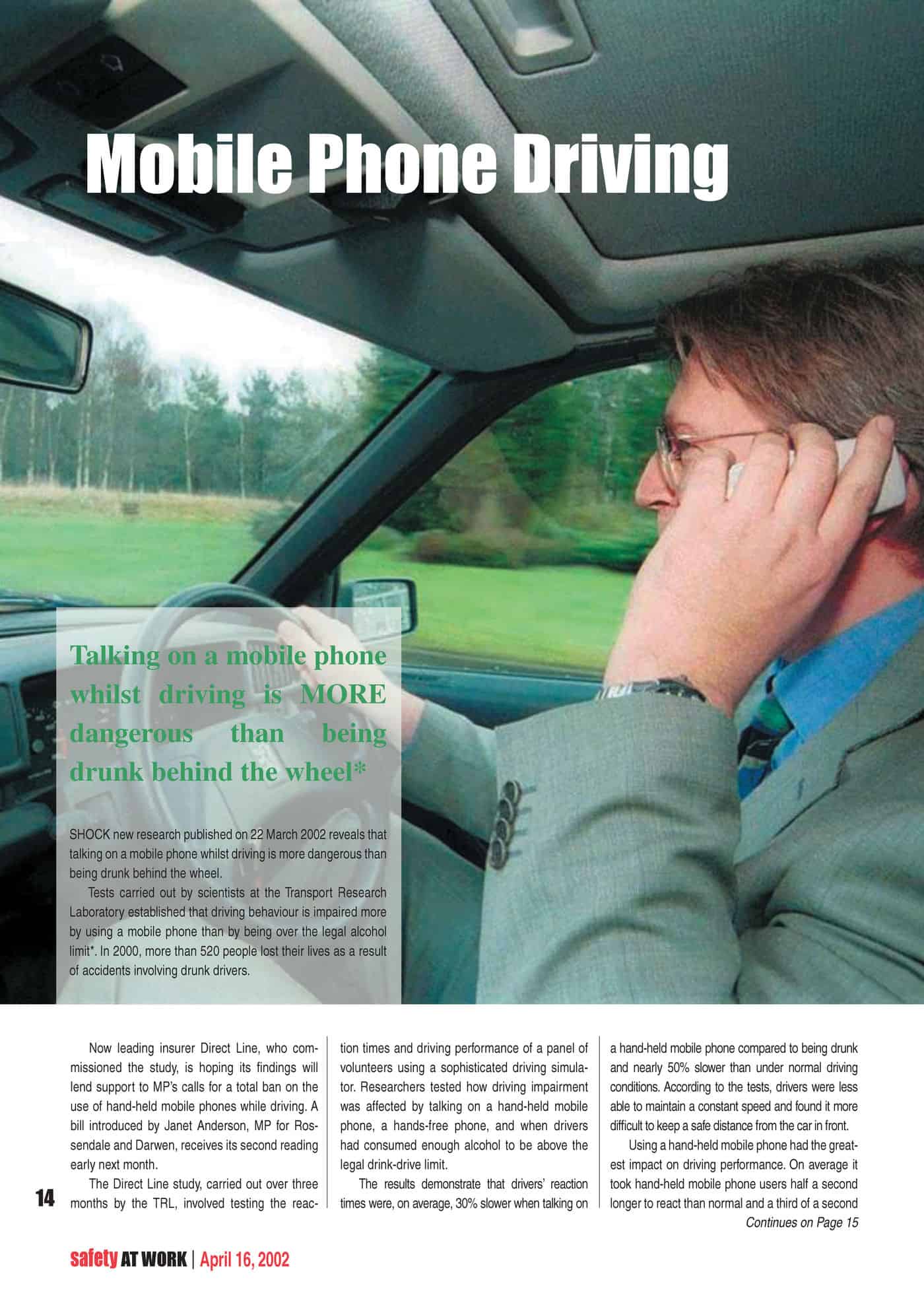The issue of driving while using a mobile is a perennial issue for the media but nothing much changes. The New York Times on 20 July 2009 carried an article on the latest research which confirms many previous studies that using a mobile phone while driving increases the risk of an accident.
 No US State has banned the practice because social use of mobile phones has become so widespread that any ban is impossible to enforce effectively.
No US State has banned the practice because social use of mobile phones has become so widespread that any ban is impossible to enforce effectively.
In January 2009, SafetyAtWorkBlog reported on the recommendations from WorkSafe Victoria on the matter. Even in their guide they would say nothing more than
“recommend that hands free calls be kept to a minimum”.
At some point for most workplace hazards, the evidence outweighs the enforcement difficulties and bans ensue. It has happened to asbestos, it has happened with smoking, but these are decades after dancing around the most effective control measure – elimination.
 The industrialised world, in particular, has been wrestling with the hazard of phones and driving for well over a decade. One report from 2002 said
The industrialised world, in particular, has been wrestling with the hazard of phones and driving for well over a decade. One report from 2002 said
“Tests carried out by scientists at the Transport Research Laboratory established that driving behaviour is impaired more by using a mobile phone than by being over the legal alcohol limit.”
The footnote to this comment said
“Previous research has shown that phone conversations while driving impair performance. It was difficult to quantify the risk of this impairment because the reference was usually made to normal driving without using a phone. “Worse than normal driving” does not necessarily mean dangerous. There was a need therefore to benchmark driving performance while using a mobile phone to a clearly dangerous level of performance. Driving with a blood alcohol level over the legal limit is an established danger.”
There are always conditions set with research findings but these are sensible and valid.
 According to a 2004 report by the US National Highway Traffic Safety Administration reported by UPI (unable to find a link)
According to a 2004 report by the US National Highway Traffic Safety Administration reported by UPI (unable to find a link)
“…estimated 8 percent of all motorists — about 1.2 million drivers — were using cell phones at any given time while driving, up from 6 percent in 2002 and 4 percent in 2000. About 800,000 of those drivers used handsets and not hands-free devices.
- Handheld cell phone use increased from 5 percent to 8 percent among drivers aged 15 to 24 between 2002 and 2004.
- Use of cellular-phone handsets increased from 4 percent to 6 percent of female drivers, while the number of men talking on handheld cell phones while driving remained constant at 4 percent.
- Motorists were more likely to use a cell phone while driving alone, but drivers with children in the vehicle were just as likely to use the phone as those without children in the car.”
For those readers who like dollar figures, the same UPI article stated
“A 2002 study by the Harvard Center for Risk Analysis, part of Harvard University’s School of Public Health, found drivers using cell phones caused 1.5 million accidents annually resulting in 2,600 deaths and 570,000 injuries.
Researchers estimated banning cell phone use in vehicles would cost $43 billion a year in lost economic activity.”
 [The only HCRA report on the website is is a 2003 study – Cohen, J.T. and Graham, J.D. A revised economic analysis of restrictions on the use of cell phones while driving. Risk Analysis. 2003; 23(1):5-17.]
[The only HCRA report on the website is is a 2003 study – Cohen, J.T. and Graham, J.D. A revised economic analysis of restrictions on the use of cell phones while driving. Risk Analysis. 2003; 23(1):5-17.]
A September 2003 report from NIOSH lists a range of driver hazards related to work activities and is worth downloading. Pages 51-555 deal specifically with phone use.
(If any reader knows of a literature review on this topic, please contact SafetyAtWorkBlog)
This workplace hazard has been around for so long that in the opinion of SafetyAtWorkBlog, when someone is driving a work vehicle 100% of their attention should be on the principal task at hand – driving.
Achieving this realistic aim can be helped by
- not passing on mobile phone numbers when one knows the person is driving. The low tech alternative of taking a message works.
- having employees turn off the phone while driving. (The phone does have an OFF switch)
- not fitting workplace vehicles with hands-free units.
- reminding employees of the safe driving policies of the business; and
- enforcing those policies so that employees know that dangerous acts will not be tolerated or compensated by the company.
Above all, employees must be informed of the risks involved with distraction, must be reassured that employers will support safe actions, and must realise the affect on other drivers and their families from their own mistakes.

One thought on “Driving and talking”